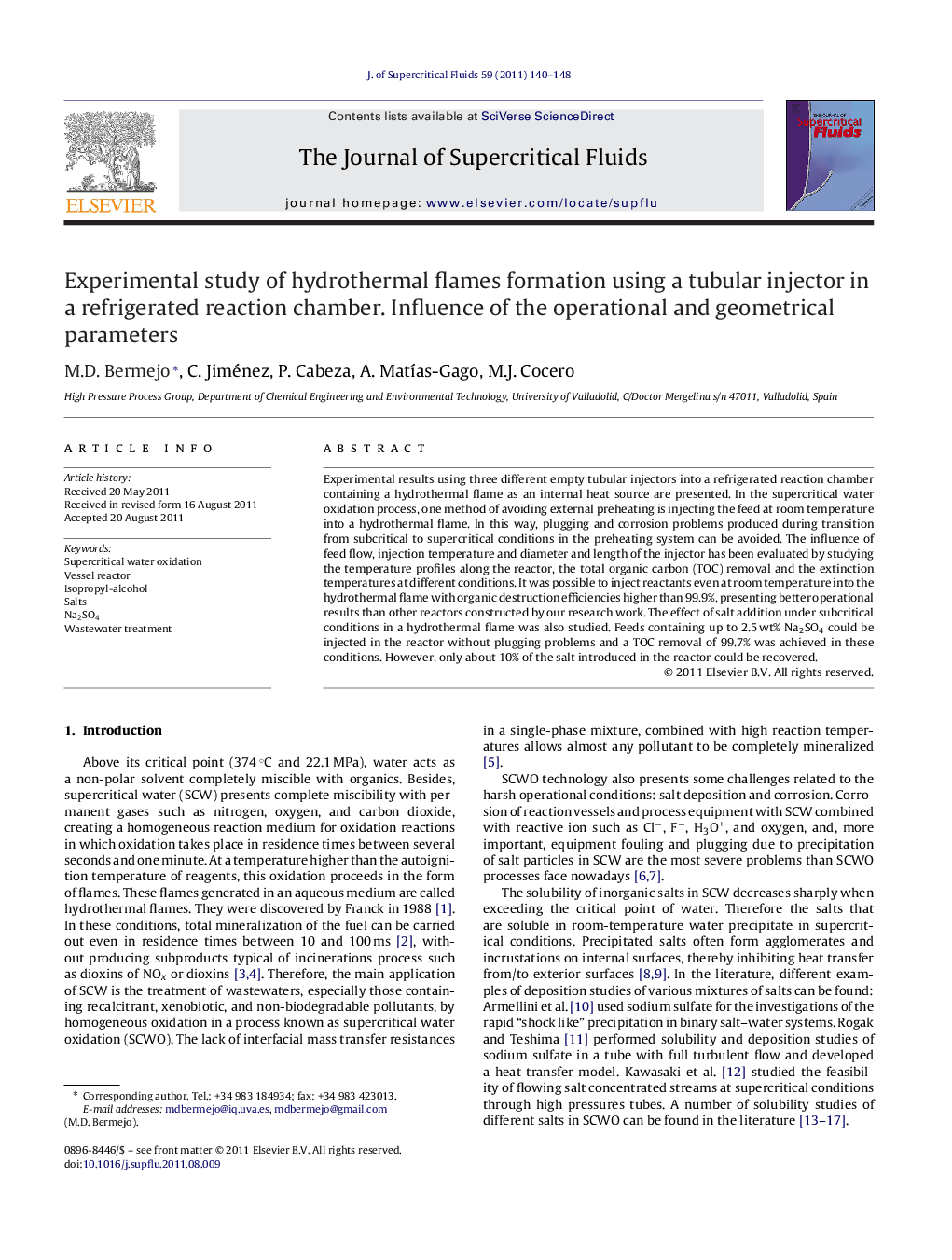| کد مقاله | کد نشریه | سال انتشار | مقاله انگلیسی | نسخه تمام متن |
|---|---|---|---|---|
| 231200 | 1427418 | 2011 | 9 صفحه PDF | دانلود رایگان |

Experimental results using three different empty tubular injectors into a refrigerated reaction chamber containing a hydrothermal flame as an internal heat source are presented. In the supercritical water oxidation process, one method of avoiding external preheating is injecting the feed at room temperature into a hydrothermal flame. In this way, plugging and corrosion problems produced during transition from subcritical to supercritical conditions in the preheating system can be avoided. The influence of feed flow, injection temperature and diameter and length of the injector has been evaluated by studying the temperature profiles along the reactor, the total organic carbon (TOC) removal and the extinction temperatures at different conditions. It was possible to inject reactants even at room temperature into the hydrothermal flame with organic destruction efficiencies higher than 99.9%, presenting better operational results than other reactors constructed by our research work. The effect of salt addition under subcritical conditions in a hydrothermal flame was also studied. Feeds containing up to 2.5 wt% Na2SO4 could be injected in the reactor without plugging problems and a TOC removal of 99.7% was achieved in these conditions. However, only about 10% of the salt introduced in the reactor could be recovered.
Figure optionsDownload as PowerPoint slideHighlights
► Study of the geometrical effects in the formation of a hydrothermal flame in a new vessel reactor design.
► Stable hydrothermal flames maintained even injecting feeds at room temperature. TOC < 20 ppm in the effluent.
► When injection velocity increased or feed injection temperature or fuel concentration decreased, the flame front moved backwards.
► When the outlet of the injector was near the top of the reactor the flame was deformed.
► Feeds containing up to 2.5 wt% Na2SO4 were injected in the reactor without plugging.
Journal: The Journal of Supercritical Fluids - Volume 59, November 2011, Pages 140–148